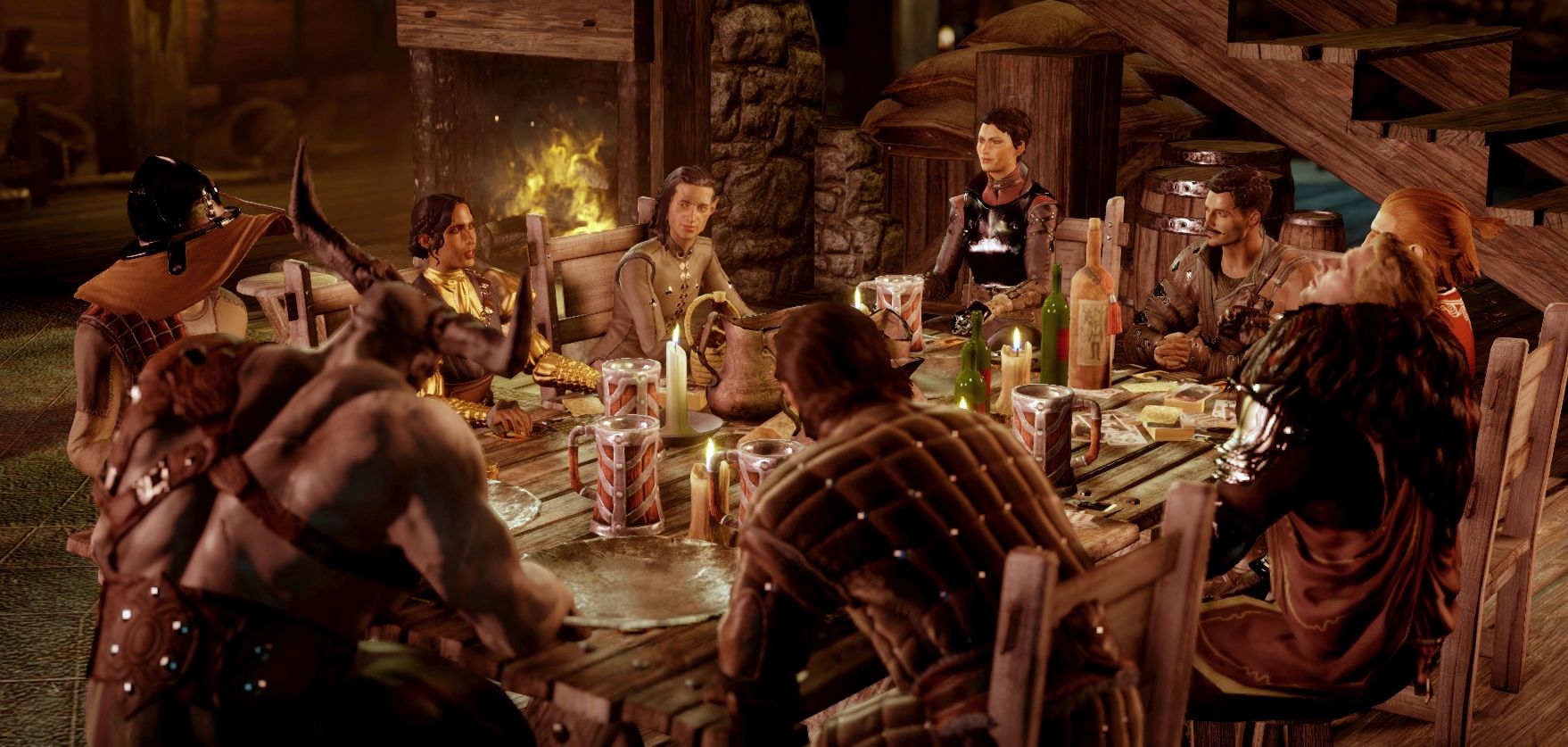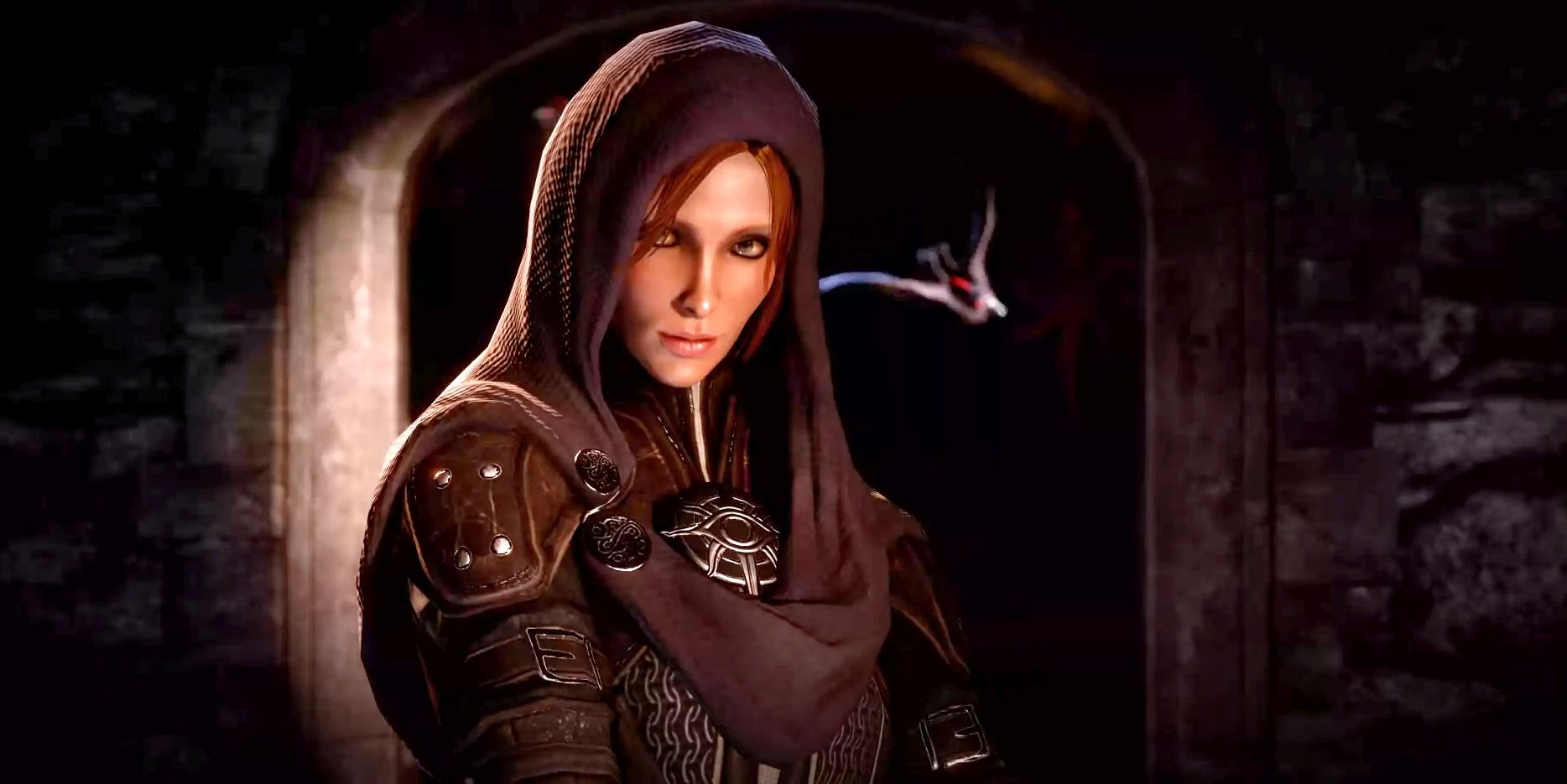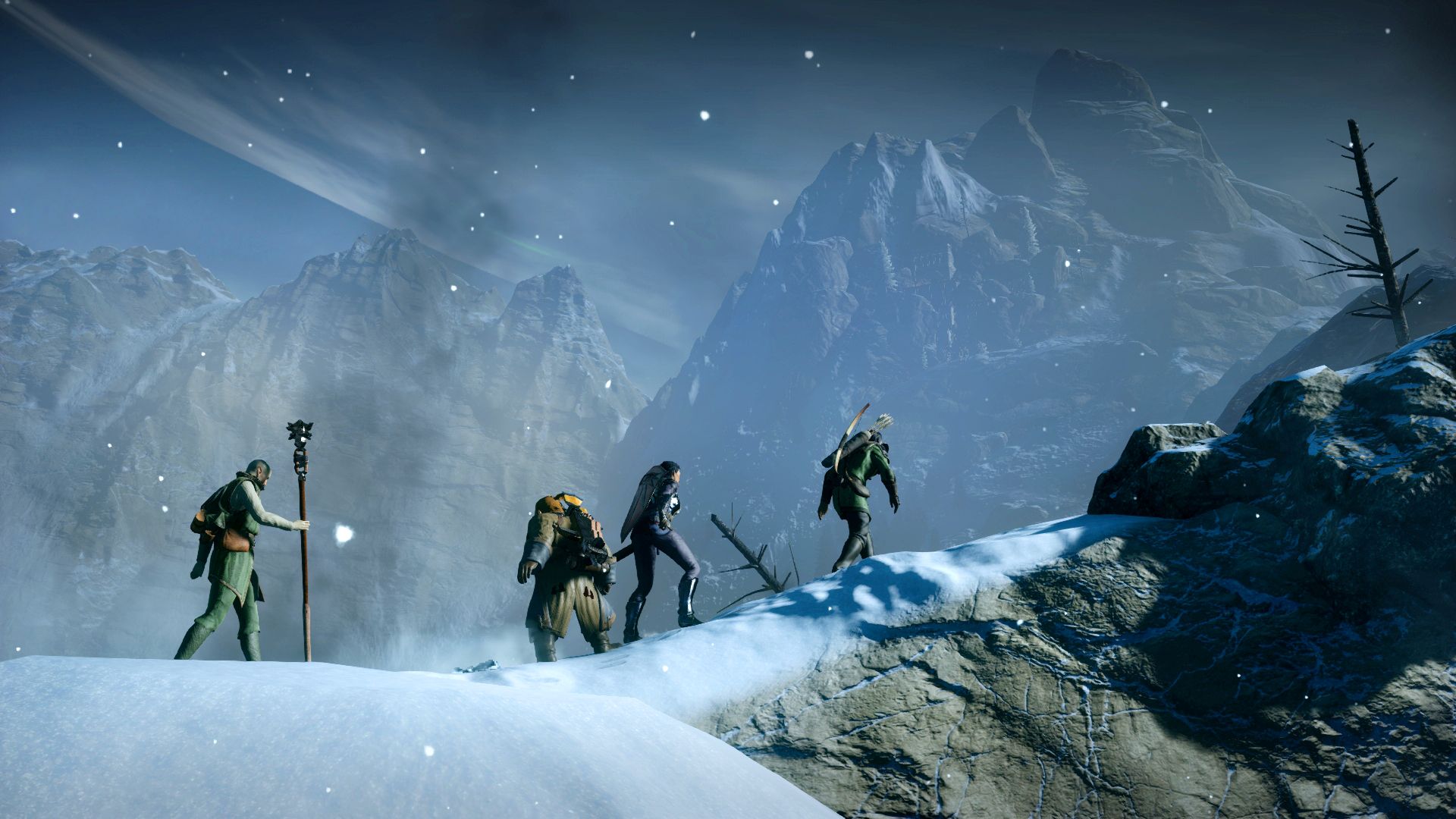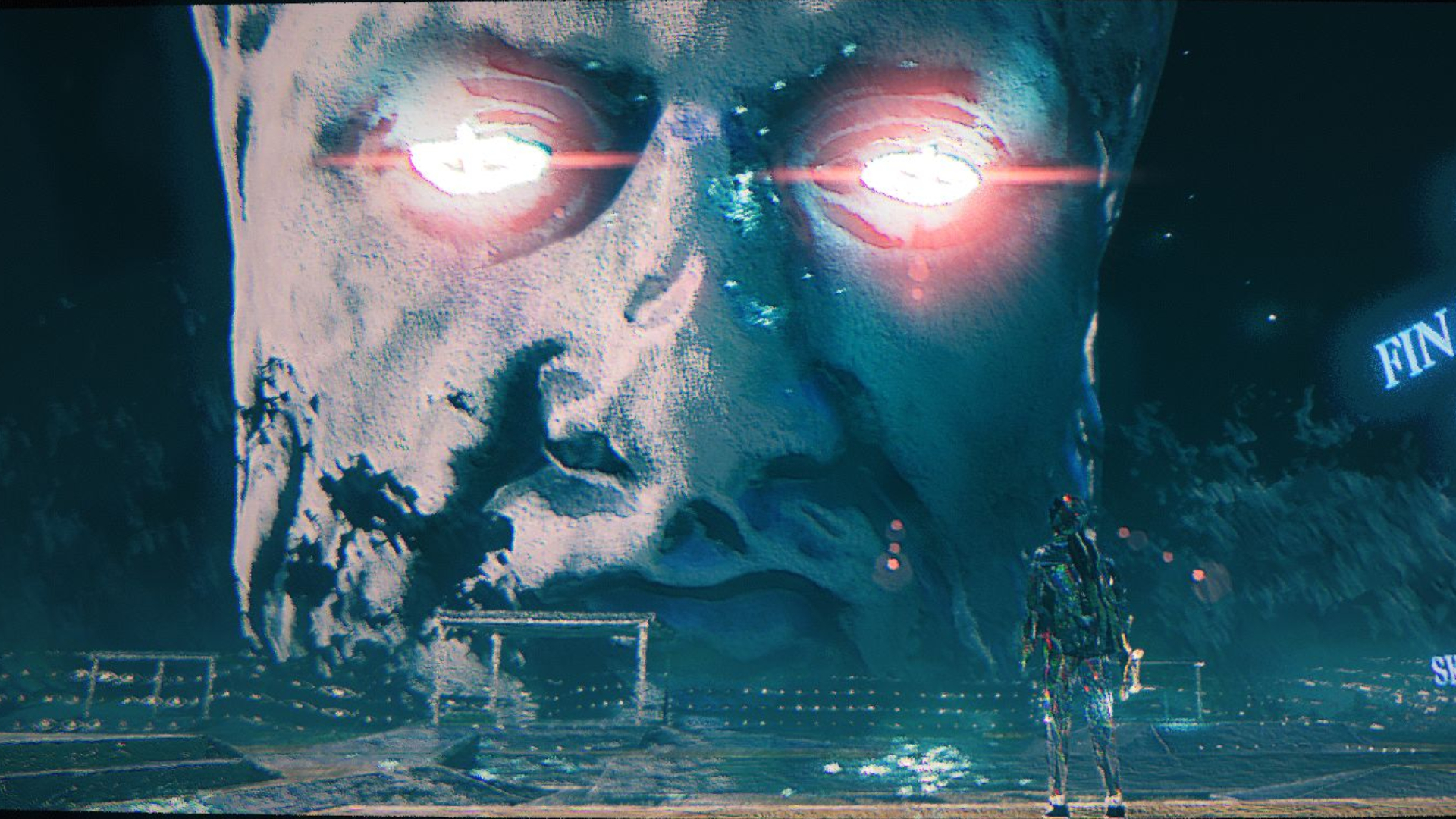The making of Dragon Age: Inquisition
How Bioware build RPGs.

It'd be understandable if you haven’t played or finished Dragon Age: Inquisition yet. Do so before you read this article.
To say that spoilers follow is an understatement—this is an exploration of the entire game, from plot-critical choices to the post-credits sequence. You certainly should play Inquisition, too—it rightly earned our Best Singleplayer award in 2014, and tells one of the most exciting, personal, dramatic, and funny fantasy stories ever brought to PC. Just don't read the following unless you want to know how that story ends.
Only a few developers can be said to own an entire style of game. You might have described something as an "id shooter" years ago, but the association doesn't quite stick any more—after all, one of the best "id shooters" of recent years was made by MachineGames. You could make a stronger case for "Bethesda RPG" denoting a particular mixture of open-world exploration, lightweight narrative and systems-driven freedom. Along similar lines, chances are you would know what I was talking about if I described something as a "BioWare RPG". The Canadian developer has established a framework for videogame roleplaying that is unlike what any other studio is doing.
Companion characters, complex choices, and stories that maintain their consistency through multiple games via the use of imported save files are part of that framework. As is a philosophical and practical focus on player agency, and a tonal dexterity that allows BioWare to fold thoughtful considerations of personal identity and full-tilt epic fantasy into the same experience. This is how I'd delineate a BioWare RPG from any other type of RPG on a technical basis.
There's another way to think about genre, however, and it's particularly relevant here: feeling. In the 1990s, id Software defined a feel of shooter, all about hair-trigger catharsis. Bethesda took the wanderlust inspired by the line "see that mountain? You can go there" and turned it into a genre. BioWare has achieved something similar, but the territory this developer presses into is emotional rather than physical.
If you know what I’m talking about when I speak of a "BioWare RPG", I suspect you know it as a feeling.
RPGs, above all other types of games, act on your heart as well as your head—in fact, I"d argue that this is among the better ways to redefine "RPG" in a world where everything has a character progression system. BioWare has done more than any other mainstream developer to explore the "heart" part of that equation, and this effort is reflected in the studio's passionate and diverse fanbase, in the fan art and cosplay it inspires, hell, even in the angry petitioning it sometimes inspires. One way or another, BioWare makes people care.
Keep up to date with the most important stories and the best deals, as picked by the PC Gamer team.
Over the years that I've been a fan of BioWare's work, I've been waiting for another company to imitate the team's style, their tone, their dedication to character—and that hasn't happened. Only Obsidian and InXile occupy a similar space, and they are bound to early BioWare by a common ancestor—Black Isle Studios—as well as being generally fluid in their adoption of different RPG styles. Given the opportunity to talk to the Dragon Age: Inquisition creative team in some depth, the matter of BioWare's idiosyncrasy is the issue I'm most keen to understand. I suspect that it has less to do with technical constraints and more to do with cultural values—so that's where I start.
One way or another, BioWare makes people care.
"We have to keep in mind player agency," says Dragon Age writer Sheryl Chee, identifying something integral to not only the RPG but BioWare's creative process. "When you're talking about agency, you're talking about how you're trying to put yourselves in the shoes of various types of players," adds Patrick Weekes, lead writer on the series. "It's not just gay players or female players—it's also the powergamer, the completionist, the guy that wants to search out the story. You're trying to put yourself into various mindsets at the same time."
Former lead writer David Gaider adds: "It's also about balancing the story we want to tell versus the responsibility we have regarding what we say about our fans. A lot of developers can—though not deliberately—narrow down who they think their audience is. It's apparent to the audience if you don't see yourself reflected in the game. By being inclusive of a larger audience, what we want to do is invite them to play."
It’s clear from talking to the team that this is a collectively held view and it defines the way they work. Interrogating a situation from multiple points of view is a theme that links the Dragon Age team's creative process to the kinds of scenarios presented in the game itself. For BioWare, inclusivity and social responsibility are essential to effective fantasy.
"The thing that always gets me is that there are—let's call them 'fans'—out there that think it’s impossible for us to be inclusive and focus on the epic fantasy moments that we need to have," Gaider says. "All it means is that, as a team, at some point we sit down and have a conversation about what the story says that we haven't fully considered. What does it say to a female player, or a gay player, or a straight male player? What interpretations are possible, and are we OK with that? It's our responsibility to give that some thought."
The notion that a game designer's responsibility to create entertainment stretches into the realms of social responsibility is currently, unfortunately, a politically charged one. It needn't be. It is a practical fact, as much to do with the quality of a game as any other technical consideration. You can see this by looking at where the Dragon Age team variously exceeded and fell short of their own standards: Inquisition succeeds enormously in terms of inclusivity, allowing the player to define their Inquisitor to a fine degree alongside companions who represent a diversity of worldviews, political beliefs, and sexualities. The game has, however, presented problems to one of the player types that Weekes identifies: the completionist. Inquisition's open-world spaces are peppered with numerous, low-impact collection and fetch quests. These are flavour, and should never be considered to constitute the bulk of the experience. But it took PCG news editor Phil Savage and I two months to convince our editor, Samuel, to stop hunting bear claws and leave the Hinterlands.
“We underestimated, to some degree, the completionist drive," says Mike Laidlaw, creative director on the Dragon Age series. "It was possible, as a completionist, that you could damage your own pacing. It's something I look at and go 'that right there? That's a lesson.'"
In discussing the problem of the "Hinterlands prisoner", Laidlaw makes a connection to an earlier problem: the player who bored themselves in earlier BioWare RPGs by feeling that they had to click on every single dialogue option before they could progress. "One of the most intriguing places this happened was when we moved to the conversation wheel," he says. "There were two reactions—one group of players were upset that it seemed like the game had been reduced. You had other players, though, who looked at the 'investigate' option and thought 'oh, so it's OK to miss those!'"
Joining in 2011, Chris made his start with PC Gamer turning beautiful trees into magazines, first as a writer and later as deputy editor. Once PCG's reluctant MMO champion , his discovery of Dota 2 in 2012 led him to much darker, stranger places. In 2015, Chris became the editor of PC Gamer Pro, overseeing our online coverage of competitive gaming and esports. He left in 2017, and can be now found making games and recording the Crate & Crowbar podcast.




